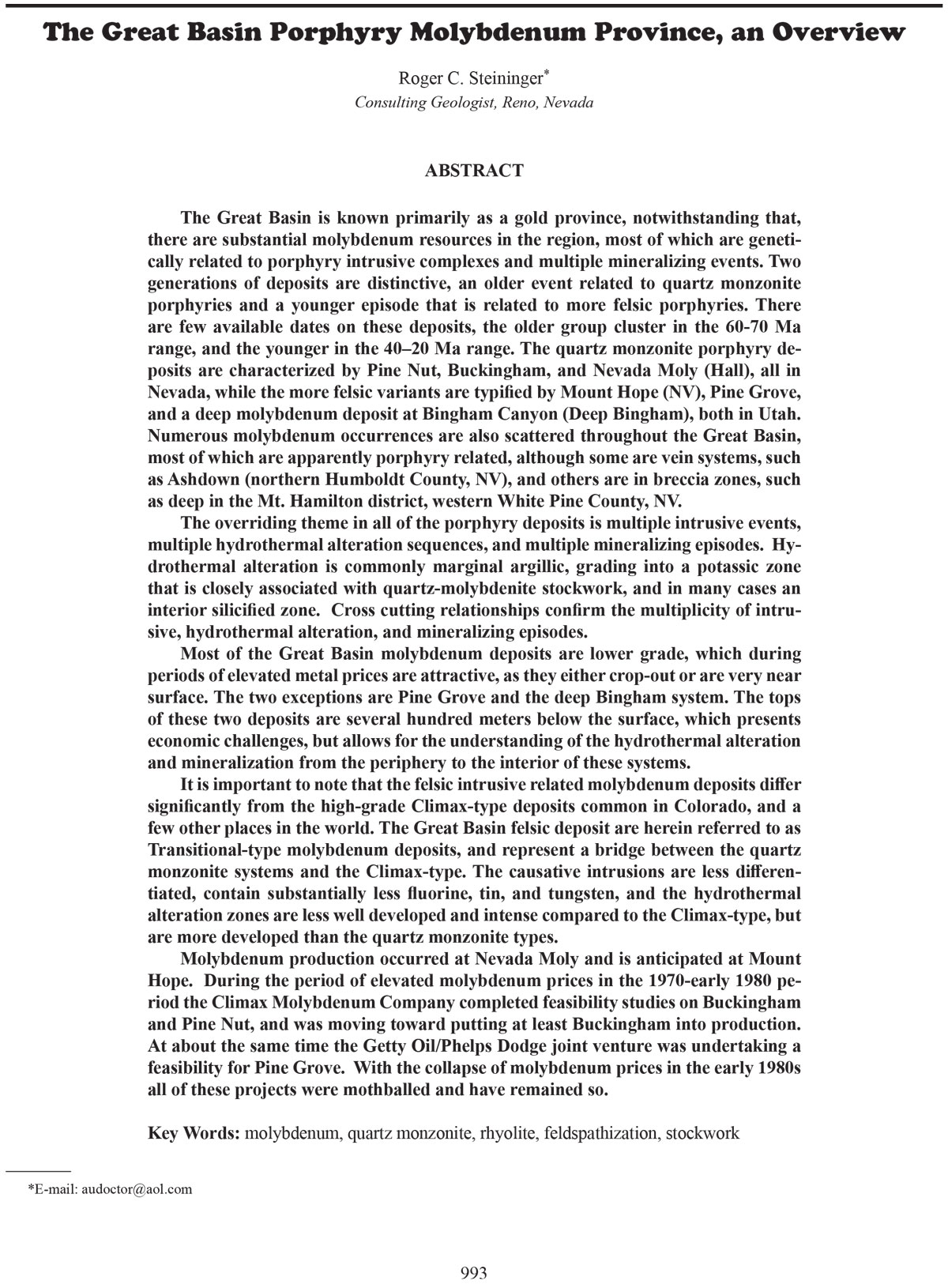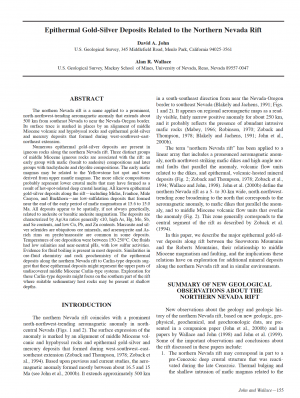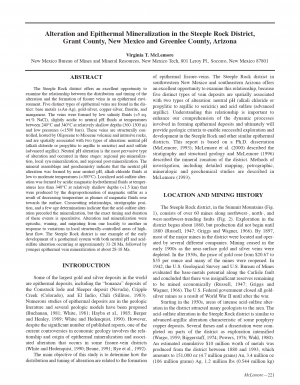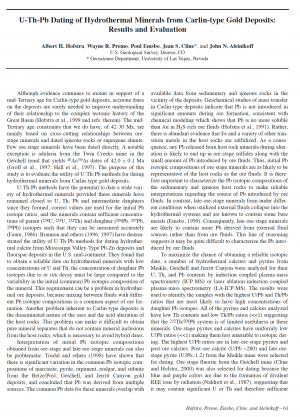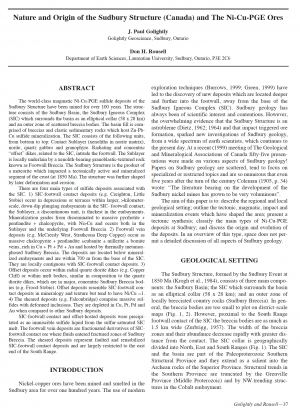Description
The Great Basin is known primarily as a gold province, notwithstanding that,
there are substantial molybdenum resources in the region, most of which are genetically related to porphyry intrusive complexes and multiple mineralizing events. Two
generations of deposits are distinctive, an older event related to quartz monzonite
porphyries and a younger episode that is related to more felsic porphyries. There
are few available dates on these deposits, the older group cluster in the 60-70 Ma
range, and the younger in the 40–20 Ma range. The quartz monzonite porphyry deposits are characterized by Pine Nut, Buckingham, and Nevada Moly (Hall), all in
Nevada, while the more felsic variants are typified by Mount Hope (NV), Pine Grove,
and a deep molybdenum deposit at Bingham Canyon (Deep Bingham), both in Utah.
Numerous molybdenum occurrences are also scattered throughout the Great Basin,
most of which are apparently porphyry related, although some are vein systems, such
as Ashdown (northern Humboldt County, NV), and others are in breccia zones, such
as deep in the Mt. Hamilton district, western White Pine County, NV.
The overriding theme in all of the porphyry deposits is multiple intrusive events,
multiple hydrothermal alteration sequences, and multiple mineralizing episodes. Hydrothermal alteration is commonly marginal argillic, grading into a potassic zone
that is closely associated with quartz-molybdenite stockwork, and in many cases an
interior silicified zone. Cross cutting relationships confirm the multiplicity of intrusive, hydrothermal alteration, and mineralizing episodes.
Most of the Great Basin molybdenum deposits are lower grade, which during
periods of elevated metal prices are attractive, as they either crop-out or are very near
surface. The two exceptions are Pine Grove and the deep Bingham system. The tops
of these two deposits are several hundred meters below the surface, which presents
economic challenges, but allows for the understanding of the hydrothermal alteration
and mineralization from the periphery to the interior of these systems.
It is important to note that the felsic intrusive related molybdenum deposits differ
significantly from the high-grade Climax-type deposits common in Colorado, and a
few other places in the world. The Great Basin felsic deposit are herein referred to as
Transitional-type molybdenum deposits, and represent a bridge between the quartz
monzonite systems and the Climax-type. The causative intrusions are less differentiated, contain substantially less fluorine, tin, and tungsten, and the hydrothermal
alteration zones are less well developed and intense compared to the Climax-type, but
are more developed than the quartz monzonite types.
Molybdenum production occurred at Nevada Moly and is anticipated at Mount
Hope. During the period of elevated molybdenum prices in the 1970-early 1980 period the Climax Molybdenum Company completed feasibility studies on Buckingham
and Pine Nut, and was moving toward putting at least Buckingham into production.
At about the same time the Getty Oil/Phelps Dodge joint venture was undertaking a
feasibility for Pine Grove. With the collapse of molybdenum prices in the early 1980s
all of these projects were mothballed and have remained so.

